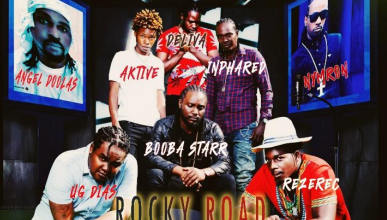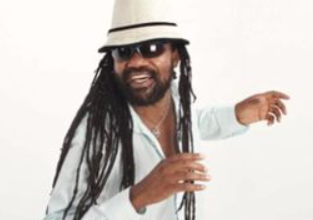Caribbean-American Heritage Month Cultural Icon Romeo Ragbir – Master of Tassa Drumming
By Shama Harrysingh
SOUTH FLORIDA – Romeo Ragbir, Master of Tassa drumming, heads one of the first leading tassa drum ensembles in South Florida. He was born in Dinsley Village, Tacarigua, Trinidad and has been serving the community selflessly for the past twenty-nine years.
While growing up in Trinidad, his father taught him how to make and play drums at an early age, Romeo became attached to the drums and soon mastered the art of tassa drumming.
He migrated to New York in 1975 and in 1984, he moved to South Florida.
Since coming to Florida, he has passed these skills on to many young people in the community.

Master Tassa Drummer, Romeo Ragbir
Seeing a thirst for tassa drumming in the community and influenced by Indian classical singer, Wallace Dulal also known as ‘Indian Prince’, he created the first tassa group in South Florida. He began to teach the art and skills of tassa drumming to students from age five who had a desire for the sweet sounds of tassa music.
His group which he refers to as ‘Romeo’s Kids’ or ‘Romeo and the Boys,’ performs at weddings, temples, cultural events and other occasions.
He has made this tradition known outside the community through performances at festivals and other events throughout the State of Florida including the State’s Heritage Festival and South Florida’s Harvest Festival.
Among his numerous awards is the Folk Heritage Award by Florida’s Folklife Council: “It is an honor for me to participate in the celebration of accomplishments of some of Florida’s devoted citizens,” said Governor Charlie Crist. “Their dedication is one of the reasons that Florida is a great state, and they deserve our praise.”
In 2000, Romeo and Ralph Rampersad, another musician, assisted in coordinating the ‘Indo-Caribbean Project Community Arts Project (2000)’ in which high school students from this community in South Florida documented their traditions through interviews, photography, videography and documentary materials and produced an exhibition at the Historical Museum of South Florida.
Proudly displayed at the Museum are tassa drums, bass drum, and jhanj (cymbals) that constitute an ensemble. In addition, Ralph Rampersad set up a room for a Hindu puja (prayer service). Along with images of Hindu deities and other ritual items, Rampersad included the typical instruments used at pujas: a harmonium, a double-headed dholak drum, a dhantal (a metal rod played with a “U”-shaped striker), and manjeera (small cymbals.
This one year project cultivated a liaison and facilitated ongoing community engagements with the museum and the use of the museum.
Currently, Romeo is preparing for the first Hosay festival in South Florida produced by Jaya Devi Arts Inc. in August 2013. The program will feature a segment ‘Blaze the Tassa’, where he will perform using the traditional method.
Another major step for Romeo is teaching tassa drumming at The University of Florida. The University is planning to incorporate tassa drumming in its curriculum, he is excited to be a a part of this program.
Romeo briefly explains the art and technique of preparing drums. “Traditionally, the drums were made from goat skin which is trimmed, stretched and left to dry. Once dried properly, the hair is then removed. The skin is then measured and fitted to the tassa shell.
When ready to play, the goat skin is heated by aid of a fire to tighten the head, making the pitch higher. This process is called ’standing it up’, in this way, the pitch can stay high for 20–30 minutes.”.
This is basically the process of covering the original tassa and this takes about two to three days from start to finish.
“The modern tassa is now made with aluminum shells and hardware from the music store using plastic skins. This process takes less than half an hour”. The ‘chope’ (sticks) are made form dry sugar cane or wild cane.
“Welcome to modern times. I still prefer the traditional tassa drums for a more distinguished sound”, said Romeo.
Tassa Drumming was brought to the Caribbean by Indentured labourers one hundred and sixty-eight years ago and is rapidly developing locally and globally.
Today, it is fused with soca, calypso and steelpan music creating a unique blend enjoyed by all cultures.
Romeo is happily married and lives with his family in Ft Lauderdale. He continues to serve the community with dedication giving lectures and
workshops at no cost.
“Tassa Drumming will be with me until I die, it is in embedded in me, it is part of my life, it is my passion”, said the soft-spoken humble Master.
Romeo can be contacted at:
[email protected]




